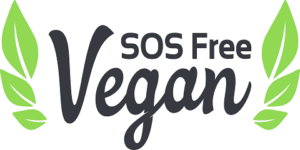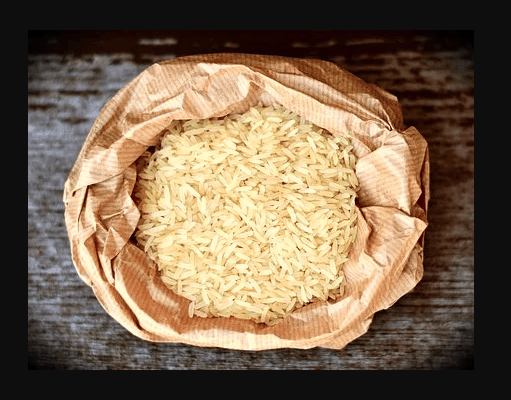Last Updated on April 23, 2023 by admin
As a side dish or sometimes even as the main meal when combined with other ingredients, rice is a tasty, healthy treat. With nutrients and minerals like protein and vitamins B and E as well as low cholesterol and fat content, you’d like to continue eating rice. Now that you’ve gone vegan, can you?
Rice on its own is vegan, but be careful with which ingredients you eat it. For example, the popular Chinese meal shrimp fried rice would not be allowed considering you can’t have seafood as part of your diet.
In this article, we’ll discuss the different types of rice, delve further into rice’s nutritional value, and talk more about which other rice dishes aren’t okay for vegans. Of course, we’ll share plenty of vegan-friendly rice recipes as well. Keep reading!
The Types of Rice
The world of rice is a vast one, so if you’re only eating white or brown rice, it’s time to expand! Here are the different types of rice.
- Wild rice: Okay, so wild rice is technically a grain, but it’s still categorized as a type of rice, so we figured we’d include it here. Although it’s harder than normal rice, it contains the amino acid lysine as well as B vitamins and protein.
- Red rice: Did you know rice came in red? It does indeed! Red rice goes by names like Bhutanese or Himalayan rice. It contains B vitamins, iron, magnesium, and fiber, making it a good alternative to brown rice.
- Jasmine rice: The long grains of jasmine rice are distinct, as is the sweet taste and pleasant aroma of this type of rice. It can become sticky when cooked.
- Sticky rice: Speaking of sticky rice, there is a type of rice that’s primarily known for being sticky. It goes by names such as sweet rice and glutinous rice as well.
- Brown rice: Made with whole grains, brown rice is dense and more nutritious than white rice. It also tastes somewhat nutty. Brown rice contains lots of iron, B vitamins, magnesium, and fiber.
- Bomba rice: The much shorter grains make the white rice known as Bomba rice fun to eat. This Spanish rice must soak in a lot of water before serving due to how absorbent it is.
- Black rice: The dark color of black rice changes to purple when you cook it. With vitamin E, iron, and antioxidants, black rice certainly adds stateliness to any meal.
- Basmati rice: Like jasmine rice, basmati has long grains, but it’s not as sweet or sticky.
- White rice: The classic white rice has much of its grain detached during production so it’s less nutritious than other types of rice.
The Nutritional Value of Rice
Speaking of rice nutrition, let’s take a closer look at the nutritional facts courtesy of USDA. The following information is for one cup of white, long-grained rice or 158 grams:
- 206 calories
- 4 grams of total fat
- 1 grams of saturated fat
- 1 grams of polyunsaturated fat
- 1 grams of monounsaturated fat
- 0 milligrams of cholesterol
- 2 milligrams of sodium
- 55 milligrams of potassium (1 percent of your daily recommended value)
- 45 grams of carbohydrates (15 percent of your daily recommended value)
- 6 grams of dietary fiber (2 percent of your daily recommended value)
- 1 grams of sugar
- 4 grams of protein (8 percent of your daily recommended value)
- 1 percent of calcium
- 1 percent of iron
- 5 percent of vitamin B6
- 4 percent of magnesium
Remember, these nutritional facts are for white rice only. Here are the nutrition factors courtesy of USDA for a cup or 195 grams of brown rice:
- 216 calories
- 8 grams of total fat (2 percent of your daily recommended value)
- 4 grams of saturated fat (2 percent of your daily recommended value)
- 6 grams of polyunsaturated fat
- 6 grams of monounsaturated fat
- 0 milligrams of cholesterol
- 10 milligrams of sodium
- 84 milligrams of potassium (2 percent of your daily recommended value)
- 45 grams of carbohydrates (15 percent of your daily recommended value)
- 5 grams of dietary fiber (14 percent of your daily recommended value)
- 7 grams of sugar
- 5 grams of protein (10 percent of your daily recommended value)
- 2 percent of calcium
- 4 percent of iron
- 15 percent of vitamin B6
- 21 percent of magnesium
Rice Dishes Vegans Can Eat
From arborio to jasmine, white to black, red, and all other rice types in between, when eaten plain, rice is a fine addition to your vegan diet. Rice is indeed plant-based, but other ingredients might make a rice dish ineligible to be eaten as a vegan.
First, we’ll cover the vegan-safe rice dishes.
Non-Fish Sushi
You can indeed make sushi with all sorts of other ingredients than fish, including avocado and cucumber. These rolls are light and refreshing!
Carrot Rice
This colorful rice dish lets you get your daily dose of veggies. The rice used here is basmati. Other ingredients include cashews, salt, onion, bay leaves, cloves, green cardamom, cinnamon, and a dash of vegetable oil.
Rice Pilaf
To make rice pilaf vegan, prepare it with pureed tomatoes, turmeric powder, cayenne, garam masala, cumin, vegetable oil, and brown rice. A topping of Methi leaves adds authenticity to the dish!
Rice Dishes Vegans Can’t Eat
Here are some rice dishes that are not vegan-friendly. Modify or skip them!
Shrimp Fried Rice
We discussed this earlier, but it’s worth mentioning again. Shrimp and other seafood, as well as shellfish and fish, are all barred as part of the vegan diet, which means passing on this Chinese dish.
Fish-Based Sushi
It doesn’t matter if fish is raw or cooked, by the way. If fish or seafood appear in a sushi roll, you can’t eat it as a vegan.
Buttered Rice
Some people liven up their rice with butter, which is not recommended if you’re adhering to the vegan diet.
Conclusion
Rice is a staple cereal grain that’s widely consumed around the world. Fortunately, you can continue your rice-eating habits as a vegan, just do make sure you’re conscientious about how your rice is prepared!
Recent Posts
You’ve read this blog and it’s certainly piqued your curiosity about what it means to be an SOS-free vegan. You’ve learned about this branch of veganism from our introductory post and maybe...
Vegans Desserts! Few things taste better than a refreshing ice cream cone on a hot summer’s day. Now that you’ve given up sugar and oil (not to mention salt) and gone vegan though, you may feel...

